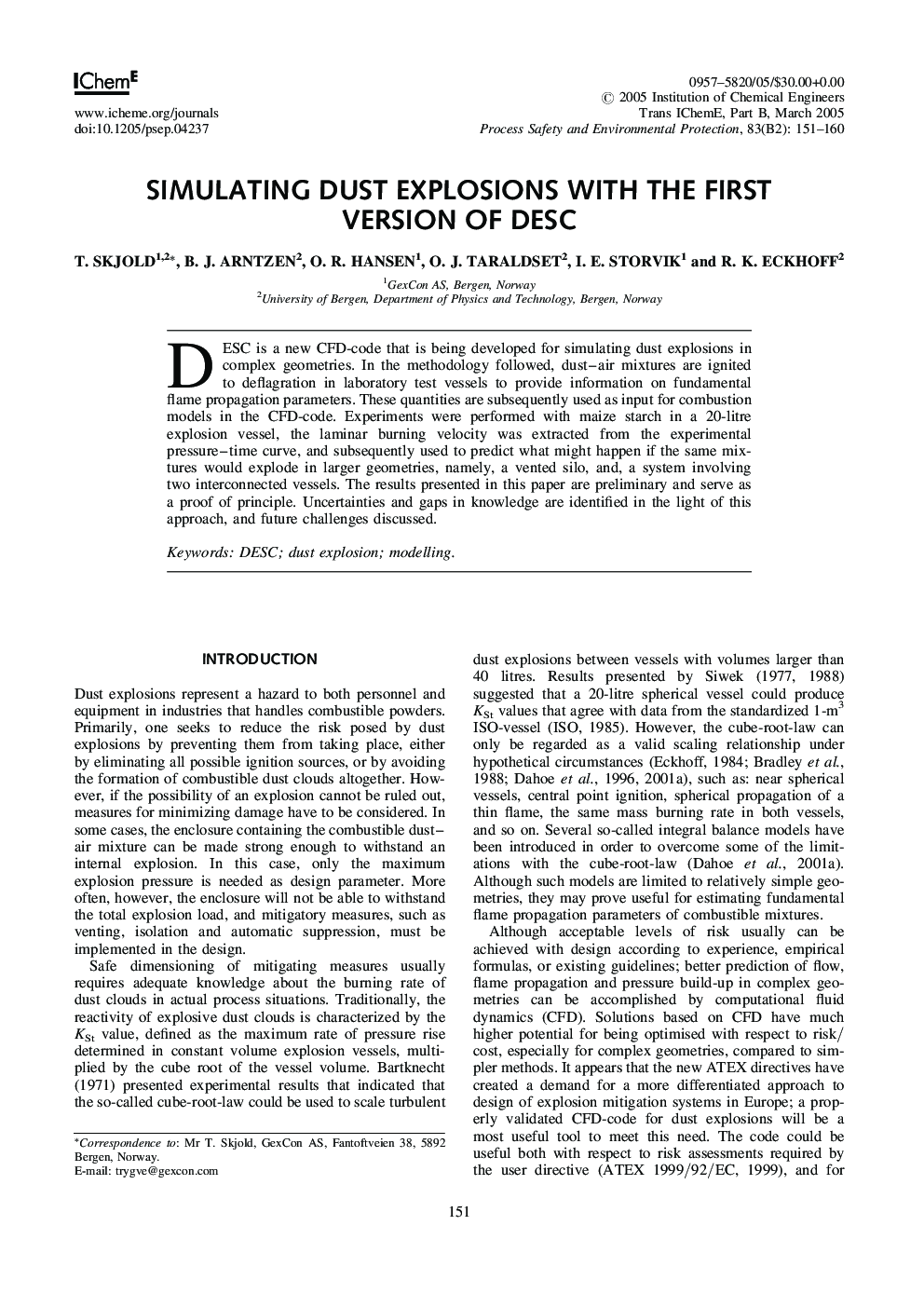| Article ID | Journal | Published Year | Pages | File Type |
|---|---|---|---|---|
| 10374043 | Process Safety and Environmental Protection | 2005 | 10 Pages |
Abstract
DESC is a new CFD-code that is being developed for simulating dust explosions in complex geometries. In the methodology followed, dust-air mixtures are ignited to deflagration in laboratory test vessels to provide information on fundamental flame propagation parameters. These quantities are subsequently used as input for combustion models in the CFD-code. Experiments were performed with maize starch in a 20-litre explosion vessel, the laminar burning velocity was extracted from the experimental pressure-time curve, and subsequently used to predict what might happen if the same mixtures would explode in larger geometries, namely, a vented silo, and, a system involving two interconnected vessels. The results presented in this paper are preliminary and serve as a proof of principle. Uncertainties and gaps in knowledge are identified in the light of this approach, and future challenges discussed.
Keywords
Related Topics
Physical Sciences and Engineering
Chemical Engineering
Chemical Health and Safety
Authors
T. Skjold, B.J. Arntzen, O.R. Hansen, O.J. Taraldset, I.E. Storvik, R.K. Eckhoff,
